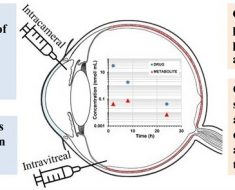In a recent study published in PLOS Digital Health, researchers assessed the recommendations and challenges associated with wearable devices in digital health.

Wearable technology is becoming more prevalent in the healthcare industry as an instrument for clinical care and scientific research. Wearables are considered essential tools for more digitized, individualized, preventive care. Wearables, however, have also been linked to risks and problems, such as those related to data sharing and privacy. However, discussions in the literature have largely concentrated on either technical or ethical issues. The contribution of wearables to collecting, developing, and applying biomedical knowledge has only been discussed to a limited extent.
An overview of wearable technology
In the present study, researchers presented an epistemic overview of the primary monitoring, screening, detection, and prediction-related capabilities of wearable technology for health.
Wearable technology is presently used for a wide variety of health-related purposes. The team developed an overview that examined the contemporary context for wearable technology while emphasizing the epistemic contribution of wearables to the acquisition, development, and application of biomedical knowledge. Four primary uses for wearables in the health environment were identified, which included monitoring, screening, detection, and prediction.
The team categorized monitoring as the essential and core purpose of wearables, which include devices like wristbands, watches, patches, and apparel. Monitoring is the activity of collecting ongoing data for a particular population. Three more key uses were identified for wearables based on these monitoring capabilities. In datasets gathered by monitoring, screening was an essential function recognizing particular situations and the people associated with these conditions. Wearables are typically used for this purpose based on passive sensors that measure factors like motion, light, steps, pressure, sound, et cetera.
The detection process is closely related to screening. Wearables are frequently used to identify conditions and notify specific users when they monitor particular conditions in populations. Analysis of wearable data gathered through monitoring is known as detection, and it entails identifying patterns and features that may serve as indicators and markers of particular biological problems.
Prediction or the inference of future patterns and occurrences of relevance for the biological study of populations based on monitoring is the fourth function of wearables. Wearables have been evaluated concerning coronavirus disease 2019 (COVID-19) for the retrospective identification and prediction of COVID-19. Other examples include the use of respiratory rate data to forecast chronic obstructive pulmonary disease (COPD) exacerbations and the usage of accelerometer data collected from wearable devices to predict biological age and death.
Standards for data quality
The team determined that monitoring is the key component on which all wearable health technology functionalities are built. High-quality data are viewed as the foundation for advantages at the clinical level and beyond. Data quality is also one of the essential values of research ethics and the social purposes of biomedical research. However, the inability to contextualize how wearable data is gathered, organized, and evaluated raises doubts about the viability of quality evaluation.
Variability is one problem that makes it challenging to evaluate data quality in the context of wearables. Wearable data are typically gathered by various device types or sensors, if not through various data collection techniques. It is challenging to establish universal standards to evaluate the quality of data given this level of variability. The same parameter is frequently measured using a variety of sensors, processing methods, and maybe even output devices. Regulation is one option to address these issues and ensure that wearables may be used as trustworthy and high-quality data sources. The goal in this situation is to legalize wearables as medical devices based on their clinical validity. A vital stage in the acceptance of wearable technology for health is clinical validity, which is also important for regulating the caliber of wearable data.
Access to wearable devices for health equity
Wearable technology can deliver data specific to users' wants, problems, and worries. However, it appears that the benefits of this such data collection are not equitably spread among individual users. Users who have greater socioeconomic resources and levels of digital literacy are disproportionately more likely to profit from the usage of wearables as diagnostic and prognostic tools for health and disease. Additionally, using wearables and other digital health tools to monitor public health initiatives may cause privacy problems for various social groups in terms of surveillance.
For instance, structurally disadvantaged socioeconomic groups have been disproportionately impacted by COVID-19 surveillance and regulatory restrictions. Access to this technology must be guaranteed in the same way that access to the technology's obvious benefits must be guaranteed if wearables are to be included in public health policies and campaigns. The advantages of wearable health monitoring are currently more readily available to consumer technology businesses than to individual users.
Overall, the study findings discussed various wearable technology's effects on digital health. Thus, the study provided a better understanding of the role of wearables in connection to other biomedical technologies and methods to address their adoption and regulation.
- Canali S, Schiaffonati V, Aliverti A (2022). Challenges and recommendations for wearable devices in digital health: Data quality, interoperability, health equity, fairness. PLOS Digital Health. doi: https://doi.org/10.1371/journal.pdig.0000104 https://journals.plos.org/digitalhealth/article?id=10.1371/journal.pdig.0000104
Posted in: Medical Science News | Medical Research News | Disease/Infection News
Tags: Chronic, Chronic Obstructive Pulmonary Disease, Coronavirus, covid-19, Diagnostic, Healthcare, Medical Devices, Public Health, Research, Respiratory

Written by
Bhavana Kunkalikar
Bhavana Kunkalikar is a medical writer based in Goa, India. Her academic background is in Pharmaceutical sciences and she holds a Bachelor's degree in Pharmacy. Her educational background allowed her to foster an interest in anatomical and physiological sciences. Her college project work based on ‘The manifestations and causes of sickle cell anemia’ formed the stepping stone to a life-long fascination with human pathophysiology.
Source: Read Full Article





